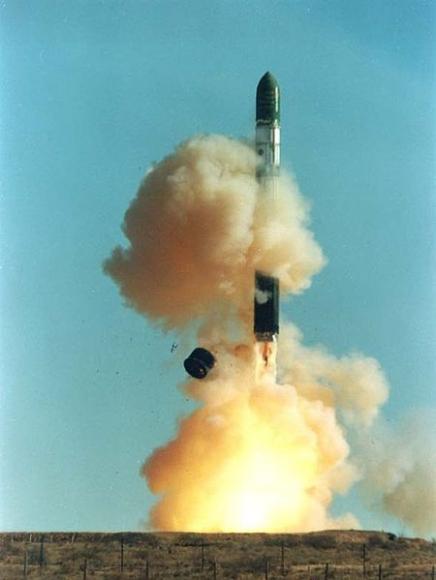The military opposition between NATO and the Russian Federation, on the occasion of the events in Ukraine, brought to mind the nuclear nightmare, making a Russian device rise up to the news, whose constitution is already of 1985, but never declared as such by the interested parties themselves.
The chain of command has the final decision-maker in the President, but is assisted by the Minister of Defense, by the whole of the General Staff and by regional commands. These are connected to each other by a communication channel protected by ESW interference, it seems called Nuclear C3 network.
It is characterized by the redundancy system, in order to reduce the probability of error of a single power center. The Command and Control of the missile system of Russia, is therefore activated by the political summit, which would be informed of a nuclear attack by the apparatus of early warning composed of the satellite network, a non-subsidiary condition to ground based radars.
The Russian nuclear final response system, renamed by the US as a "dead hand", would have the ability to retaliate where the lines of command of the strategic missile forces were canceled.
The official name is: "Perimeter", whose main control is called "Kazbek" and would be activated through the launch codes to be typed on the briefcase that never leaves the President, whose code name is "Cheget". In fact, Perimeter would be an alternative system to Russian nuclear forces and should be designed to automatically trigger nuclear retaliation.
It was mainly designed to compensate for any electronic interference that would render the usual communication channels unusable, therefore a backup to guarantee missile control.
In essence, the components of the Perimeter system interact with the "command" head of a latest-generation ICBM missile, composed of a radio transmitter, which while in flight through Russian airspace, would send the correct codes not only to the command centers , but especially to the individual launch systems that survived the US First Strike. Therefore to the silos, planes, submarines and the mobile land Regiments.
The decision to launch missiles is the prerogative of an autonomous control and command system, a complex artificial intelligence that receives and analyzes a wide variety of information on seismic activity, radiation, atmospheric pressure and the intensity of the vibrations of military radiofrequencies. Check the telemetry from the observation posts of the strategic missile force and the data coming from the early warning systems.
If it were to detect powerful ionizing and electromagnetic radiation from multiple sources, it would compare them with the data on seismic disorders in the same positions, and would decide whether a massive nuclear attack is in progress or not. In the latter case, Perimetro would initiate retaliation while also bypassing Kazbek. Perimeter is dormant, but still continues to analyze incoming information. When on alert or if it receives a warning signal from strategic forces, a network of monitoring sensors would be activated to detect signs of nuclear explosions.
Before launching, Perimeter should meet four conditions. First of all, if a nuclear attack is taking place. Then it would monitor communications with the General Staff, where the response would be positive, the system would immediately deactivate. On the contrary, it would carry out a cross-research with Kazbek and if it does not get an answer, artificial intelligence would facilitate the decisions of the servicemen in the command bunker where it is stored, delegating to them the right to decide.
Giovanni Caprara












